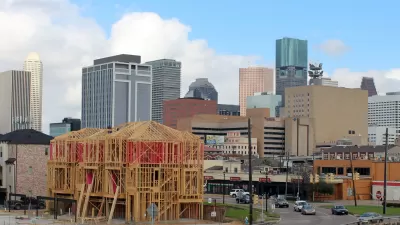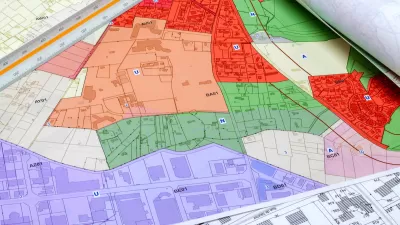A judge's ruling provides a way forward for the proposed Ashby high rise development in Houston—a 21-story residential building that provoked a lawsuit by neighbors who have little recourse to protest developments in their city.
Erin Mulvaney reports on the much-anticipated ruling by state District Judge Randy Wilson with regard to the proposed Ashby high rise in Houston. The developer can move forward with the tower, denying the permanent injunction requested by the residents, but the ruling also granted $1.2 million to the 20 residents who filed suit against the developer, acknowledging that the development would constitute a nuisance.
The ruling has a tough line to walk, given the city's laissez-faire approach to land use regulation. Judge Wilson provided the following commentary on the request for an injunction by the residents: "If an injunction is granted, there is no question but that it will have a chilling effect on other developments in Houston," and "[as] Houston becomes more and more urbanized and denser, perhaps Houston should reconsider whether zoning is appropriate for this City…That is not for this Court to decide."
The Ashby controversy has been reflected in other development battles around the city in recent years: "The Ashby fight, raging since 2007, has influenced city policy and provided a template for similar battles in other well-off neighborhoods. Residents in neighborhoods from the Museum District to River Oaks and the Heights have since protested big development projects."
FULL STORY: Ashby ruling allows high-rise to go forward

Trump Administration Could Effectively End Housing Voucher Program
Federal officials are eyeing major cuts to the Section 8 program that helps millions of low-income households pay rent.

Planetizen Federal Action Tracker
A weekly monitor of how Trump’s orders and actions are impacting planners and planning in America.

Ken Jennings Launches Transit Web Series
The Jeopardy champ wants you to ride public transit.

Crime Continues to Drop on Philly, San Francisco Transit Systems
SEPTA and BART both saw significant declines in violent crime in the first quarter of 2025.

How South LA Green Spaces Power Community Health and Hope
Green spaces like South L.A. Wetlands Park are helping South Los Angeles residents promote healthy lifestyles, build community, and advocate for improvements that reflect local needs in historically underserved neighborhoods.

Sacramento Plans ‘Quick-Build’ Road Safety Projects
The city wants to accelerate small-scale safety improvements that use low-cost equipment to make an impact at dangerous intersections.
Urban Design for Planners 1: Software Tools
This six-course series explores essential urban design concepts using open source software and equips planners with the tools they need to participate fully in the urban design process.
Planning for Universal Design
Learn the tools for implementing Universal Design in planning regulations.
Heyer Gruel & Associates PA
Ada County Highway District
Institute for Housing and Urban Development Studies (IHS)
City of Grandview
Harvard GSD Executive Education
Toledo-Lucas County Plan Commissions
Salt Lake City
NYU Wagner Graduate School of Public Service





























